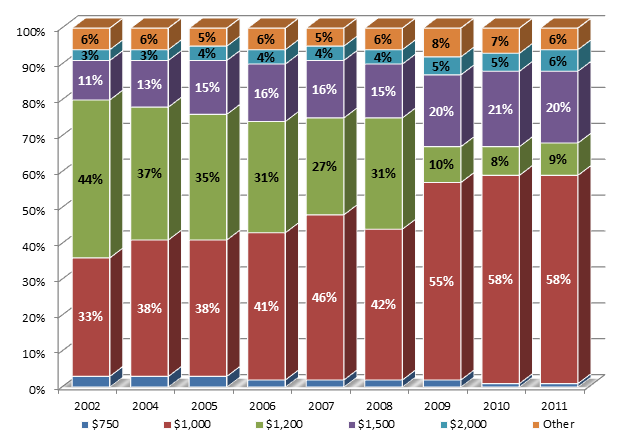Everyone’s trying to accomplish more in less time, and the employee-benefits industry is no exception. Insurance producers — agents and consultants – divide their time and attention among up to 10 types of employee benefits, with medical insurance leading the way. Delta Dental of Wisconsin survey data show that health/medical insurance takes up 53 percent of agents’ time, while only 11 percent of their time is spent on dental insurance.
Delta Dental of Wisconsin is constantly working to provide our agents, groups and subscribers with outstanding service and support, so that the limited time they spend on dental benefits is easy and stress-free.
To achieve this goal, in 2010 we began conducting an annual survey of agents throughout the state to find out how we stack up against our competition and how we can make agents’ experience with us even better.
Our annual survey, now in its third year, asks agents to rate us and our competitors on 19 different attributes, ranging from how well we provide customer service to brand reputation to claim-payment accuracy. Agents rank these attributes when deciding where to place dental business and rate each carrier’s performance on these attributes.
Agents named customer service, claim-payment accuracy, rate stability, network strength, pricing, and ease of administration for groups as the most important attributes to them.
Survey results show that Delta Dental of Wisconsin performs better than our competitors on these key attributes. While our competitors are rated favorably on a few attributes, we received the highest score on virtually every attribute being measured (15 of the 19, in fact). By looking at the total picture – carrier ratings and agent comments – it is clear that we are agents’ overwhelming carrier of choice.
All of this positive feedback is nice, but we aren’t going to rest on our laurels; we are always looking for ways to provide an even better experience to anyone working with Delta Dental of Wisconsin.
By employing a data-driven approach – constantly evaluating what we are doing and asking agents how we can better serve them and their clients – we are committed to maintaining our place as Wisconsin’s top dental-insurance carrier.
